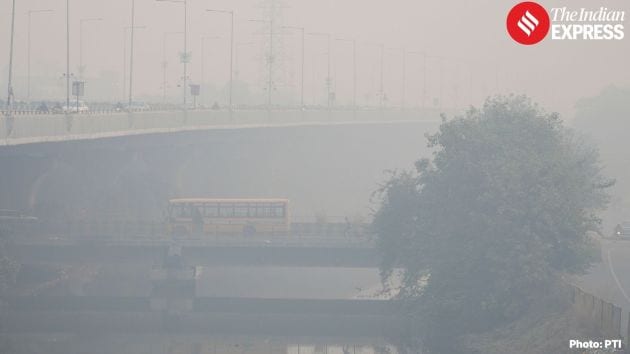In Pictures: Thick Smog Blankets Delhi as AQI Soars Past 560
Delhi woke up to a thick blanket of smog today as the city’s air quality dipped to the “hazardous” category. The AQI crossed 560 in several areas, reducing visibility and prompting health advisories
November 8, 2025 16:13 IST 1 / 7
1 / 7Delhi woke up to a dense, choking layer of smog today morning, as the city’s Air Quality Index (AQI) shot up to 566 at 7 a.m., placing it firmly in the “hazardous” category. Major parts of the capital were blanketed in thick haze, drastically reducing visibility on roads and affecting morning traffic (Source: Photo by PTI)
 2 / 7
2 / 7According to data from the Central Pollution Control Board, several monitoring stations in Delhi, including Anand Vihar, Jahangirpuri, and RK Puram, recorded AQI readings between 550 and 650 — levels considered dangerous for all age groups (Source: Photo by PTI)
 3 / 7
3 / 7Officials from the India Meteorological Department attributed the worsening air quality to calm surface winds, high humidity, and smoke carried from stubble burning in neighboring Punjab and Haryana, which trapped pollutants over the city (Source: Photo by PTI)
 4 / 7
4 / 7The thick smog layer extended across the NCR region, with Noida, Ghaziabad, Gurugram, and Faridabad also registering “severe” air quality levels, while early-morning commuters reported difficulty driving due to extremely low visibility (Source: Photo by PTI)
 5 / 7
5 / 7Health authorities in Delhi advised residents to stay indoors as much as possible, avoid outdoor exercise, and wear N95 masks if stepping out. Hospitals reported a spike in patients complaining of throat irritation and breathing discomfort (Source: Photo by PTI)
 6 / 7
6 / 7In response to the worsening conditions, Delhi’s Environment Department extended the Stage IV GRAP (Graded Response Action Plan) measures, which include bans on construction activity, restrictions on diesel vehicles, and advice for schools to consider closures (Source: Photo by PTI)
 7 / 7
7 / 7Despite emergency measures, weather experts warned that air quality is unlikely to improve significantly before the next western disturbance brings strong winds (Source: Photo by PTI)











